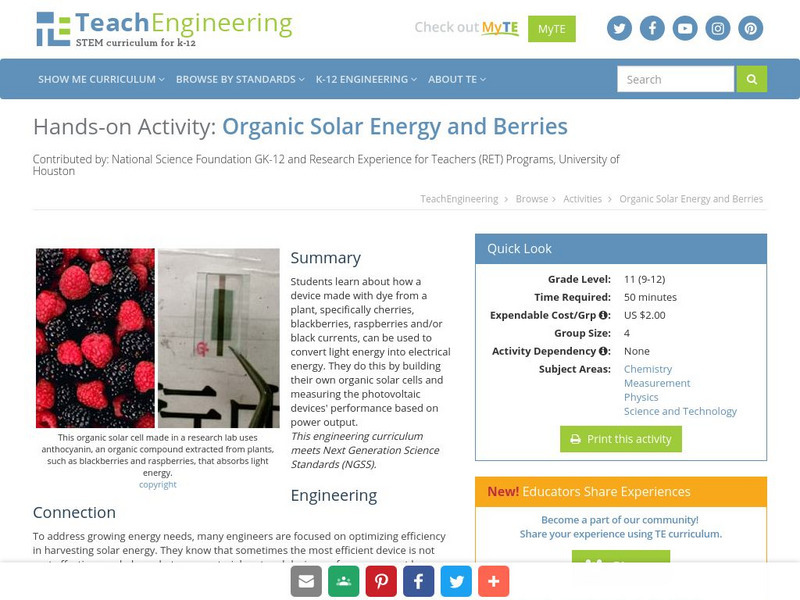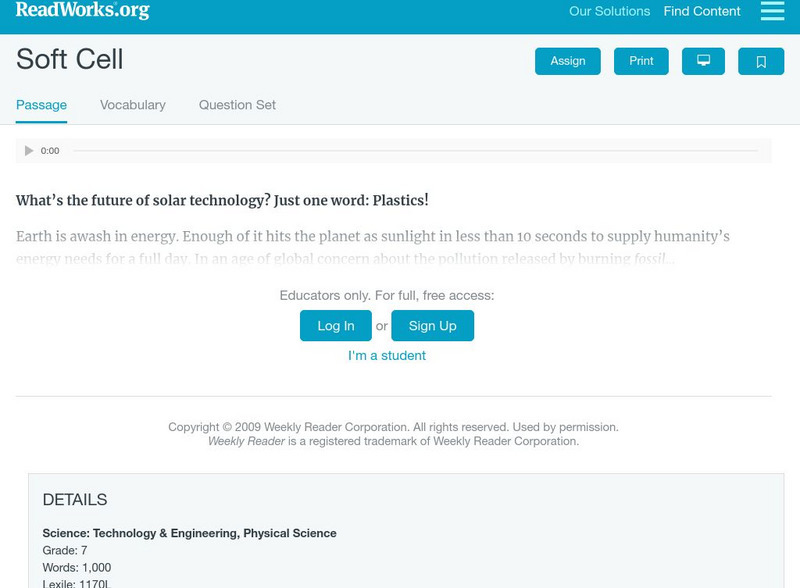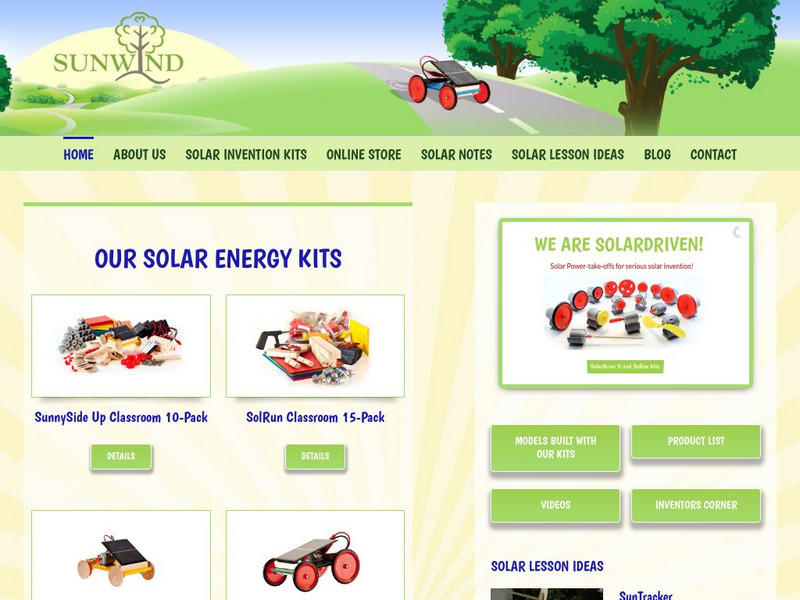Curated OER
TRANSPIRATION IN PLANTS
Students define the hydrologic cycle, define transpiration, name the three parts of the hydrologic cycle, and record the amount of moisture given off by several green plants.
Curated OER
Ethanol
Learners explore how to fuel cars with corn and then test different items to explore the process of fermentation.
Curated OER
Chemical Energy
In this science worksheet, students fill in the blank for 15 sentences about chemical energy. For example, "Chemical bonds hold_."
Curated OER
The Energy of Life in Zebrafish
Learners study the stages of development of an unknown organism. In this zebrafish lesson, students examine and collect data as they use microscopes to view a zebrafish embryo.
Curated OER
Milkweed Monitoring
Ninth graders study milkweed and see how it is effected by ozone. In this air pollution lesson students complete a lab activity that includes data analysis.
Curated OER
Physical Principles in Living Systems
Seventh graders experiment with white light, plane mirrors, and curved mirrors in order to demonstrate the physical principles of living systems. In this physical principles lesson plan, 7th graders take 3 days to discover what happens...
Curated OER
Biology Quiz
In this biology worksheet, students complete short answer questions about botany, animals, plants, DNA, and more. Students complete 15 short answer questions.
Curated OER
MLTI region
In this MLTI region instructional activity, students answer multiple choice questions about the MLTI region and other NASA missions. Students answer four questions.
Curated OER
Charge-Coupled Devices (CCDs)
Learners explore CCDs or Charge-Coupled Devices. In this digital devices lesson, students examine how CCDs are constructed, collect light, and create a digital signal.
Curated OER
Wetlands - Frog Facts Song
For this frog facts song worksheet, students follow directions on how to compose a song using frog facts. Students pick a well known children's song, gather facts about frogs, and then write new lyrics to the children's song.
Curated OER
DNA Fingerprinting
Students experiment with chromatography as a technique which is similar to electrophoresis that scientists use to identify DNA samples.
Curated OER
What Do Plants Need to Grow?
Fourth graders control variables to determine the effect on plant growth. They collect information by observing and measuring and construct simple graphs, tables, maps and charts to organize, examine and evaluate information.
Curated OER
Super Scientists Bingo
In this science learning exercise, learners select twenty-five scientists from the list to fill in their bingo card. Then they match each of the scientists listed to their correct description strip.
Curated OER
Generators: Three Mile Island vs. Hoover Dam
Learners are given a history of electricity and its development into the modern age lifeline upon which we so depend. The methods of power generation are introduced, and further discussion of each technology's pros and cons follows. ...
Curated OER
The History of Life
In this history of life worksheet, students review 4 vocabulary words associated with the beginnings of life. Students place these terms into a crossword puzzle and then complete 2 fill in the blank questions.
Curated OER
Powering a Green Earth
Learners compare and contrast renewable and nonrenewable energy. In this environmental science lesson, students discuss the importance of going green. They identify the different components in a power grid system.
Curated OER
Photosynthesis and Respiration
In this photosynthesis worksheet, 7th graders study the effects of photosynthesis and respiration in plants and animals. Students respond to 21 short answer questions.
Science Buddies
Science Buddies: Solar Cell Power Output vs. Temperature
Solar cells provide a clean way of making electricity directly from sunlight. In this project you will build a simple circuit and experimental setup to investigate whether the power output of a solar cell changes with ambient temperature.
TeachEngineering
Teach Engineering: Organic Solar Energy and Berries
Students learn about how a device made with dye from a plant, specifically cherries, blackberries, raspberries and/or black currents, can be used to convert light energy into electrical energy. They do this by building their own organic...
Science Buddies
Science Buddies: Solar Speedway
Solar power is hot these days. Gleaming, black solar panels soak up rays on more and more rooftops of homes and businesses providing a clean, alternative source of heat and electricity. You might guess that different times of the day...
Other
California Energy Commission: Solar Energy Science Projects [Pdf]
Four science projects in which students learn how solar energy works and how thermal energy is transferred and utlized in a solar air heater, a solar water heater, a solar hot dog cooker, and a solar cell.
CK-12 Foundation
Ck 12: Physical Science: Chemical and Solar Cells
[Free Registration/Login may be required to access all resource tools.] How chemical and solar cells work and produce an electric current.
Read Works
Read Works: Soft Cell
[Free Registration/Login Required] An informational text about solar cells being made of plastic. A question sheet is available to help students build skills in reading comprehension.
Other
Sun Wind Solar Industries, Inc.
Solar energy facts and information. Instructions on how to build solar devices.






















![California Energy Commission: Solar Energy Science Projects [Pdf] Lesson Plan California Energy Commission: Solar Energy Science Projects [Pdf] Lesson Plan](https://d15y2dacu3jp90.cloudfront.net/images/attachment_defaults/resource/large/FPO-knovation.png)


